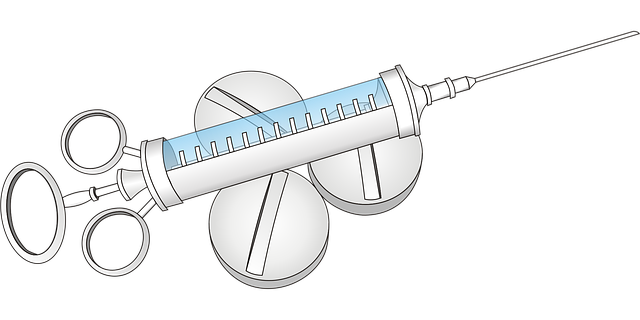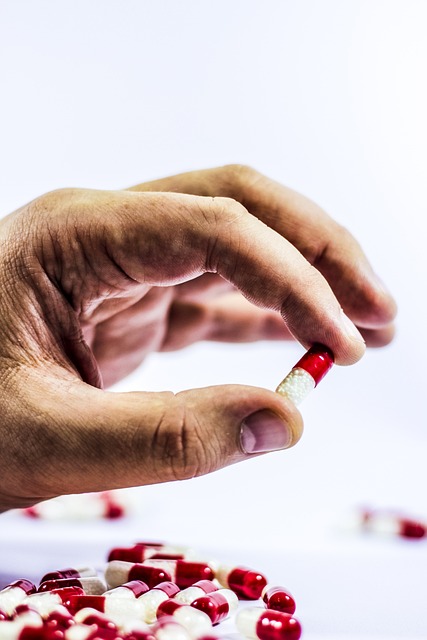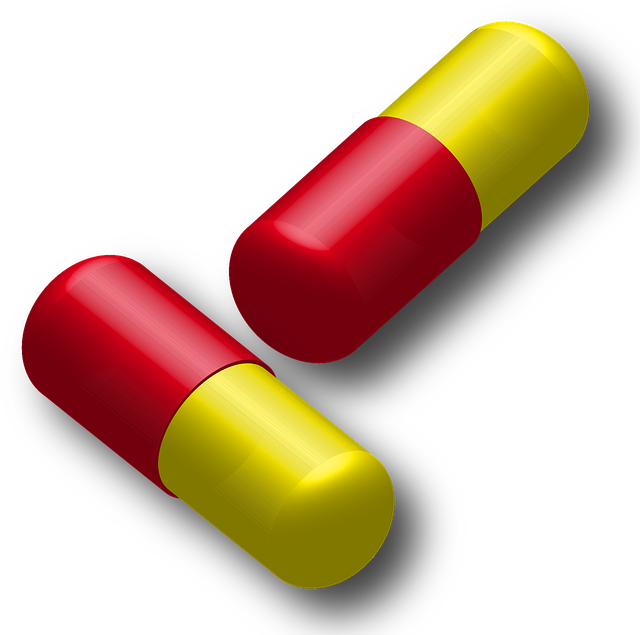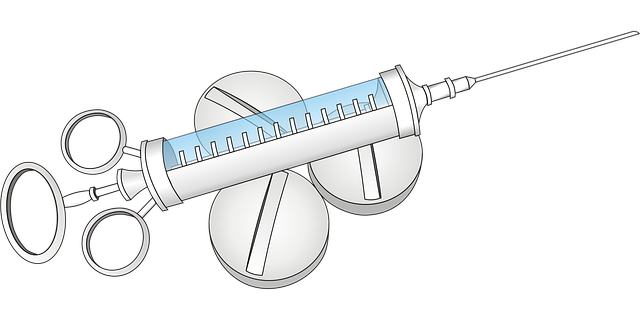GLP-1 drugs mimic natural gut hormones to manage type 2 diabetes by enhancing insulin secretion and suppressing glucagon release. They offer advantages over traditional treatments with improved glycemic control, weight loss, and reduced hypoglycemia risk. Side effects include nausea, diarrhea, and hypoglycemia, which can be managed through meal timing adjustments, hydration, and medication. Long-term safety studies are ongoing to monitor gastrointestinal issues and rare complications like pancreatitis or kidney problems. Patient education and tailored lifestyle modifications enhance treatment outcomes, while alternative treatments remain crucial for those intolerant to GLP-1 drugs.
GLP-1 drugs, a groundbreaking treatment for type 2 diabetes, have revolutionized metabolic management. However, like any medication, they come with potential side effects that need addressing. This article delves into the intricacies of GLP-1 therapy, exploring its mechanisms and the various aspects of side effect management. From understanding nausea and diarrhea to long-term safety and patient education, we provide a comprehensive guide for both healthcare professionals and patients navigating this powerful therapeutic option.
Understanding GLP-1 Drugs and Their Mechanism

GLP-1 drugs are a class of medications designed to mimic the effects of natural gut hormones, specifically glucagon-like peptide-1 (GLP-1). These drugs play a significant role in managing type 2 diabetes by enhancing insulin secretion and suppressing glucagon release. Their mechanism involves binding to GLP-1 receptors in the pancreas, which stimulates insulin production in response to rising blood glucose levels. This action helps lower blood sugar while also slowing gastric emptying, leading to increased feelings of fullness and reduced appetite.
The understanding and development of GLP-1 drugs have revolutionized diabetes treatment. They offer a more natural approach compared to traditional insulin injections or oral hypoglycemic agents. With their unique mechanism, these drugs provide benefits such as improved glycemic control, weight loss, and reduced risk of hypoglycemia. However, like any medication, they also come with potential side effects that should be managed effectively to ensure patient safety and adherence to treatment.
Common Side Effects: Nausea and Diarrhea

Nausea and diarrhea are among the most frequent side effects associated with GLP-1 drug therapy. These gastrointestinal symptoms can range from mild discomfort to more severe cases, impacting patients’ quality of life. The occurrence of nausea and diarrhea is often related to the mechanism of action of GLP-1 drugs, which stimulate insulin secretion and slow gastric emptying. This dual effect can lead to digestive distress, especially during the initial stages of treatment when the body adjusts to the new medication.
Managing these side effects is crucial for patient adherence and overall therapy success. Strategies include adjusting meal timing and composition, taking GLP-1 drugs with a small meal, and ensuring adequate hydration. In some cases, doctors may prescribe antiemetics or antidiarrheal medications to alleviate symptoms. Patients are advised to discuss any persistent or severe gastrointestinal issues with their healthcare provider to explore alternative treatment options or adjustments.
Managing Gastrointestinal Discomfort

Managing gastrointestinal discomfort is a critical aspect of GLP-1 therapy, as these drugs can sometimes cause side effects related to the digestive system. Common issues include nausea, vomiting, and diarrhea, which may arise due to the increased insulin secretion and gut hormone release induced by GLP-1 agonists. To alleviate such symptoms, healthcare professionals often recommend a combination of strategies.
Adjusting meal timing or frequency can help reduce gastrointestinal discomfort. Patients might be advised to eat smaller meals more frequently or to spread out their food intake throughout the day. Additionally, staying well-hydrated is essential, as proper hydration can mitigate nausea and diarrhea. In some cases, antiemetic medications may be prescribed to control nausea, while specific remedies for diarrhea can provide additional relief. Patients should closely monitor these symptoms and discuss any concerns with their healthcare team to ensure optimal management during GLP-1 drug therapy.
Hypoglycemia Risk in Type 2 Diabetes Patients

One of the most well-known side effects associated with GLP-1 therapy is the risk of hypoglycemia, particularly in Type 2 diabetes patients. This is because GLP-1 drugs stimulate insulin secretion in a glucose-dependent manner, which can lead to excessive insulin release if blood sugar levels drop below a certain threshold. Hypoglycemia can manifest as symptoms like sweating, dizziness, and confusion, and it’s important for patients to be aware of these signs and manage their glucose levels accordingly.
To mitigate this risk, healthcare providers often recommend close monitoring of blood sugar levels, especially during the initiation of GLP-1 therapy. Patients may also need to adjust their insulin or antidiabetic medications under professional guidance. Additionally, lifestyle modifications such as regular physical activity and a balanced diet can help prevent hypoglycemic episodes, ensuring that Type 2 diabetes patients derive the maximum benefit from GLP-1 drugs while minimizing potential adverse effects.
Weight Loss and Other Metabolic Benefits

GLP-1 therapy, involving the administration of GLP-1 drugs, offers more than just blood sugar control for people with type 2 diabetes. One of the most significant benefits is weight loss. These medications can help individuals achieve substantial and sustained reductions in body weight by increasing feelings of fullness and reducing appetite. This effect is particularly beneficial as obesity is a common comorbidity with type 2 diabetes, and managing both conditions simultaneously can lead to improved overall health.
In addition to weight loss, GLP-1 drugs provide other metabolic advantages. They can lower blood pressure and improve cardiovascular risk profiles, which are crucial considerations for patients with diabetes. By enhancing insulin secretion in a glucose-dependent manner, these therapies also support better glycemic control, reducing the risk of diabetic complications over time. These multifaceted benefits make GLP-1 treatment a promising approach for managing diabetes and associated metabolic disorders.
Long-Term Safety Considerations

The long-term safety profile of GLP-1 drugs is a key consideration for healthcare providers and patients alike. While these medications have shown significant benefits in managing type 2 diabetes, extended use may reveal potential adverse effects. Common side effects include gastrointestinal issues such as nausea, vomiting, and diarrhea, which often improve over time or can be managed with dietary adjustments and medication changes. More rare but serious complications include pancreatitis and kidney problems, necessitating regular monitoring during treatment.
Additionally, GLP-1 drugs may have an impact on cardiovascular health, with ongoing research examining their effects on heart rhythm and structure. As the use of GLP-1 therapies continues to grow, long-term safety studies are crucial for identifying any potential risks associated with these innovative diabetes treatments.
Patient Education and Lifestyle Modifications

Patient education plays a pivotal role in the successful management of GLP-1 therapy. Individuals undergoing this treatment should be thoroughly informed about the potential side effects, such as nausea, vomiting, or diarrhea, and encouraged to report any symptoms promptly. Education also extends to lifestyle modifications, including diet and exercise, which can help mitigate these side effects and optimize therapeutic outcomes. A balanced diet, rich in fiber and low in fat, can ease gastrointestinal discomfort while regular physical activity enhances overall treatment compliance and improves glycemic control.
Healthcare providers should guide patients on how to adjust their diets and incorporate more movement into daily routines. This might involve setting realistic goals for meal planning and exercise regimens tailored to individual preferences and health conditions. Empowering patients with knowledge and skills to manage their GLP-1 drug therapy, along with supportive care, can significantly enhance their treatment experience and adherence.
Alternative Treatments and Future Perspectives

While GLP-1 drugs have shown significant efficacy in managing diabetes and obesity, not every patient responds favorably or can tolerate the treatment due to various side effects. In such cases, alternative treatments offer valuable options for healthcare providers. Dietary modifications, increased physical activity, and other lifestyle interventions remain cornerstones of diabetes management, often used in conjunction with GLP-1 therapy or as standalone treatments for those unable to use GLP-1 drugs.
Future perspectives in GLP-1 therapy focus on developing more targeted and safer medications, potentially through novel mechanisms of action. Ongoing research aims to minimize side effects like nausea and gastrointestinal distress while enhancing the therapeutic benefits of GLP-1 drugs. Additionally, combining GLP-1 therapy with other emerging treatments for diabetes and obesity, such as novel insulin therapies or weight loss surgeries, holds promise for improving patient outcomes and quality of life.
